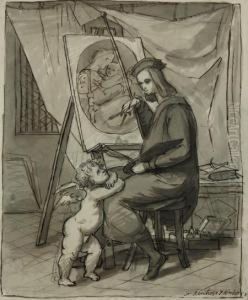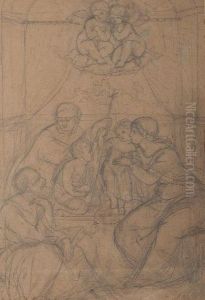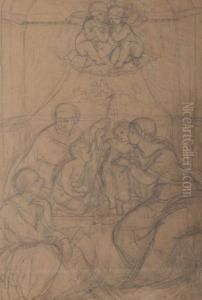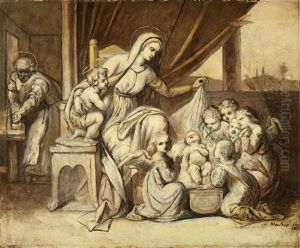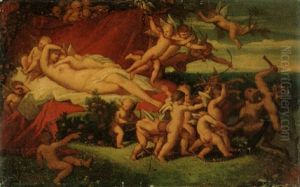Theodor Mintrop Paintings
Theodor Mintrop was a German painter and lithographer, born on December 26, 1814, in Lüdinghausen, Westphalia, and died on March 25, 1870, in Düsseldorf. His works are primarily recognized for their intricate detail, vivid expression, and the portrayal of religious and historical subjects. Mintrop is considered part of the Düsseldorf school of painting, a group that played a significant role in the 19th-century German art scene, emphasizing detailed landscapes, historical themes, and technical precision.
Mintrop's early education in art began in his hometown, but his formative years as an artist were significantly shaped by his studies at the Kunstakademie Düsseldorf, an institution renowned for its influence on German painting in the 19th century. Under the tutelage of renowned professors such as Wilhelm von Schadow, Mintrop honed his skills in painting, drawing, and lithography. His education allowed him to develop a meticulous approach to his art, characterized by a keen observation of nature and a profound interest in historical accuracy.
Throughout his career, Mintrop was deeply influenced by the religious and cultural history of Germany. This is evident in his choice of subjects, which often included scenes from the Bible, German mythology, and the lives of saints. His works are noted for their emotional depth and ability to convey the spiritual and moral struggles of his subjects. Mintrop's dedication to historical accuracy and detail also led him to travel extensively within Germany and to Italy, where he studied the works of the Renaissance masters, further enriching his style and technique.
Despite his talent and contributions to the German art scene, Theodor Mintrop remains a somewhat lesser-known figure outside of Germany. His works, however, continue to be appreciated for their craftsmanship and depth. They can be found in several German museums and collections, serving as a testament to his skill and dedication to art. Mintrop's legacy is also preserved through his influence on younger artists during his time as a teacher, passing on his meticulous approach and passion for historical and religious subjects.
